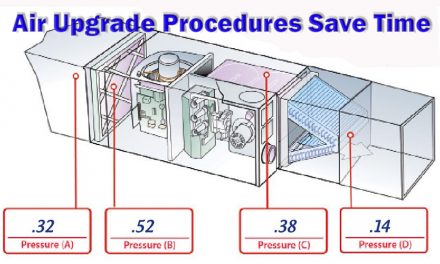As long as the team encourages them to succeed, they eventually bloom into the performers they were intended to be. Ultimately, it comes down to management and how we use the information.
Do we see problems or opportunities? Team members respond to our behavior as leaders and managers more than anything.
KPI and Career Path Creation
Key Performance Indicators are not just for management to track how well the business and techs perform. They also are great tools for creating career paths. For example, we have a manager who is so good technically that he can often help techs in the field diagnose problems over the phone.
As a manager, he needs his team to sell more agreement add-ons and get more sales leads. But sales are NOT in his wheelhouse.
To help, we created a new position, taking the top-selling technician in our service department and making him a coach to mentor people. We did the same thing with our top technical technician. Because of the KPIs we track, we knew who these guys were and we gave them each a small bump in pay. Then they coached and mentored a team of four people.
The four techs in each group need the most help presenting things, communicating with customers, and selling. We pair them with the top-selling tech who helps them improve. The mentor shares his knowledge with these young guys and can help them all day, even after hours. Talk about building camaraderie!
He has a 30-minute weekly meeting with them to review challenges and successes. He celebrates their success stories. The same thing happens with our technical mentor and his group of four. By doing this, our service manager can focus more on some bigger departmental stuff.

Everyone is compensated based on their strengths. Our highly technical technicians are in a different pay bracket than our average technical technicians, who may be good at selling agreements, add-on accessories, and other sales. Selling techs make a lot of money from spiffs.
Ultimately, they all fall into the same total pay, but they’re compensated based on strengths and what they provide to Lakeside.
KPI Balancing Act
In hindsight, it’s not that hard to set career KPIs up. But it is hard to change the way we think about how everyone needs to be paid the same. You must create an environment where it’s OK to be a Type A or a Type B personality. That environment must include a path for financial success for both.
The key for us is balance. We always work to keep things balanced. You can’t ignore maintenance agreements because you’re a good technician. You still have to offer them. But we won’t judge you based on the percentage of conversions you make.
We will hold you accountable for the number of callbacks you have.
We achieve balance using a matrix we create that includes different tasks, skills, and proficiencies. When a tech masters them, they fall into a category where their pay increases.
Management knows where all our techs stand on this skillset matrix. We don’t send them out on difficult jobs if they are not as advanced.
KPIs, then, are both a management and a career path tool.
In the end, our business is a people business. I’m not just talking about customers but also team members. It’s about a high-performance culture focused on clear career paths. From the beginning, when we onboard and acclimate new people from a technical school, another HVAC company, or even an unrelated field, we sit down and show them our career matrix. They can see the trajectory of how they can get to where they want to go.
It comes down to KPIs.
We even created a booklet showing people what their Lakeside career can look like. It includes the requirements for advancement, the training they will need, the certifications they should earn, and more. If you don’t have a way for employees to know where they are and pick a path for their future, they may not last all that long with your company.
Click Below for the Next Page:













Recent Comments